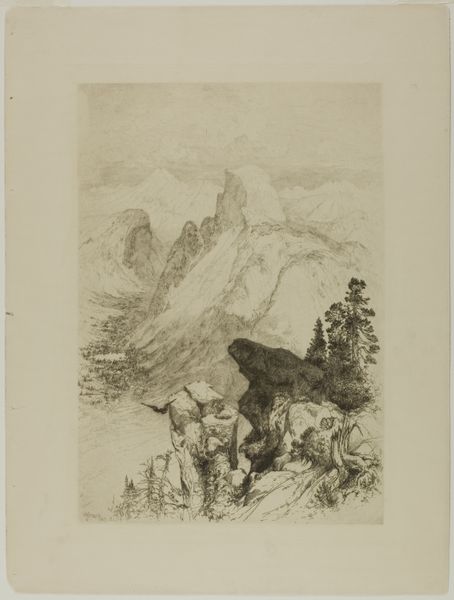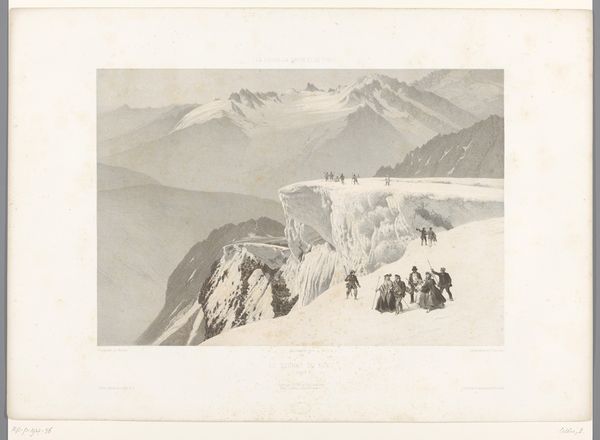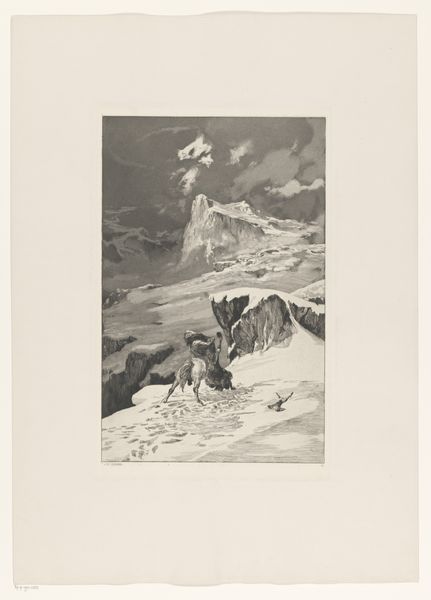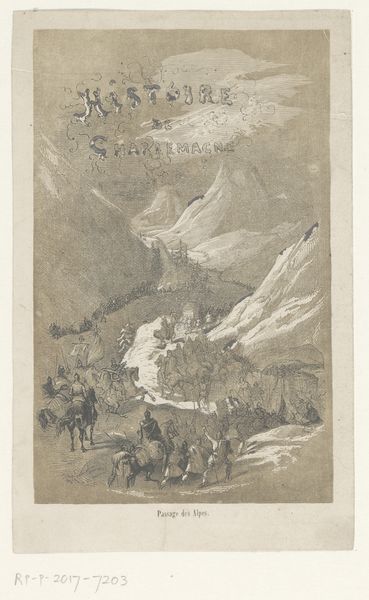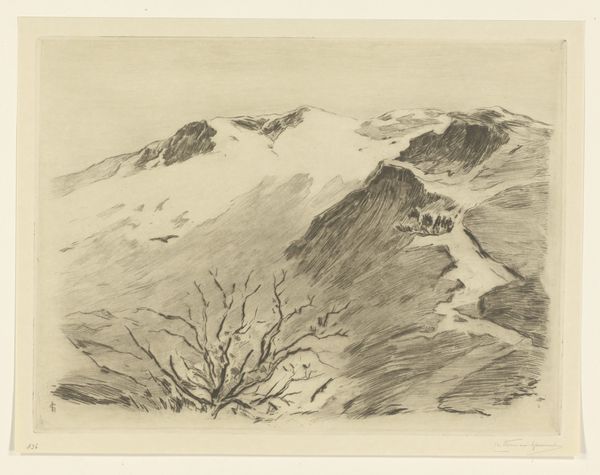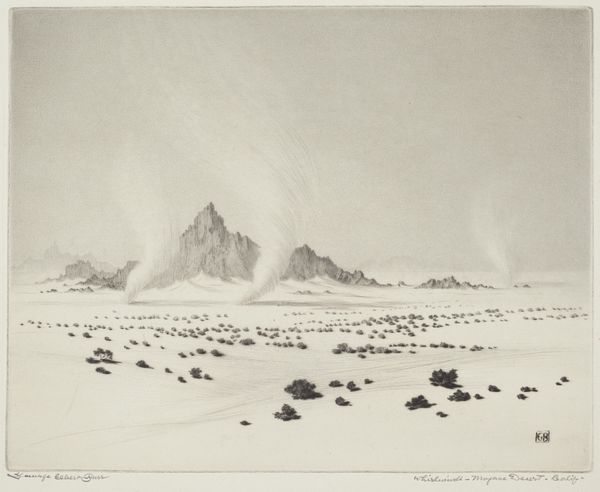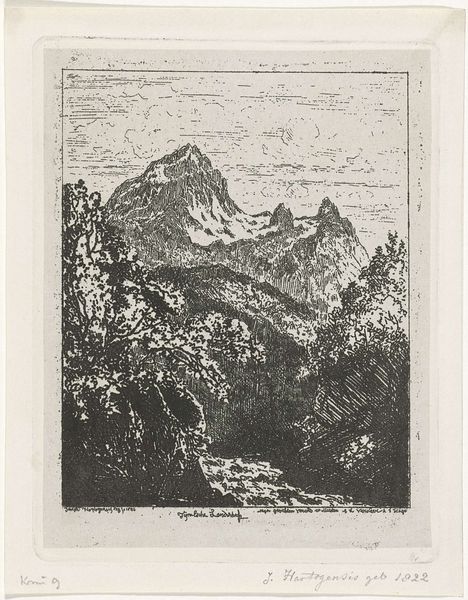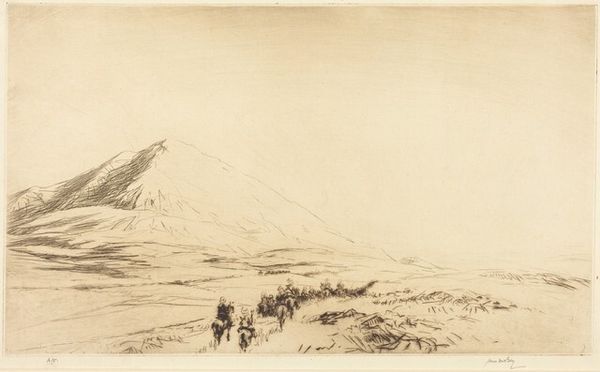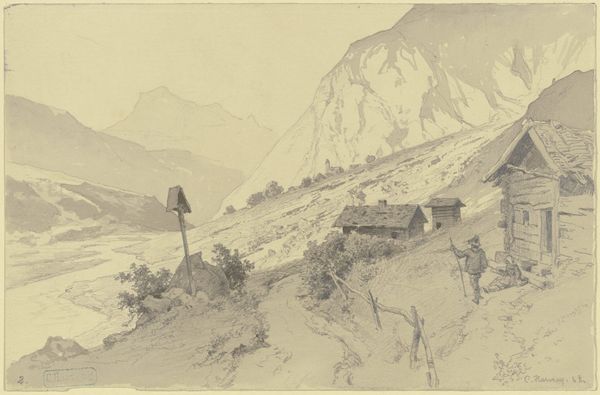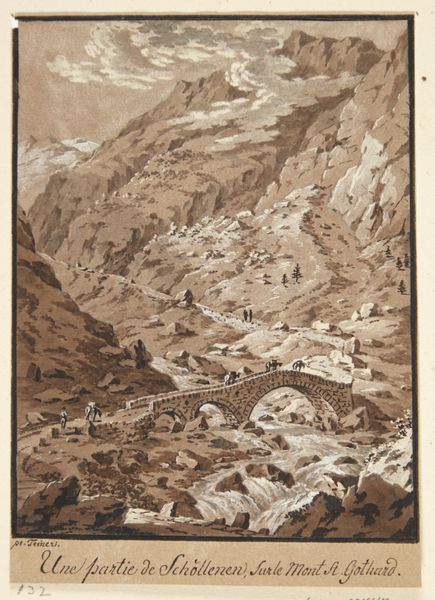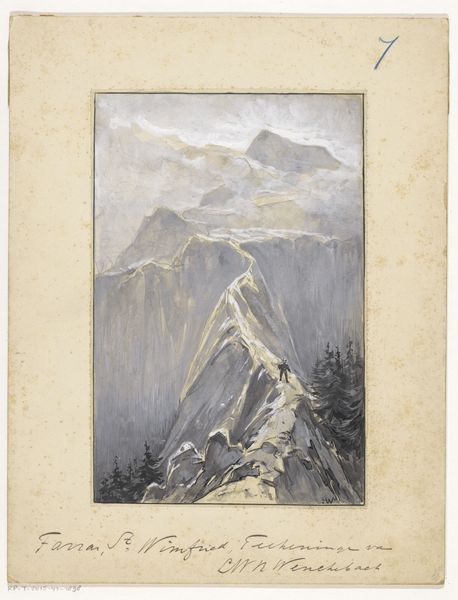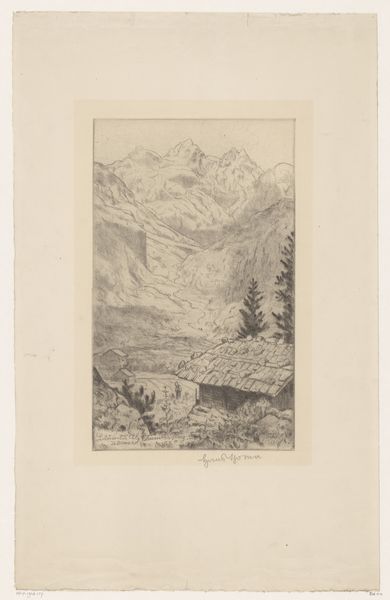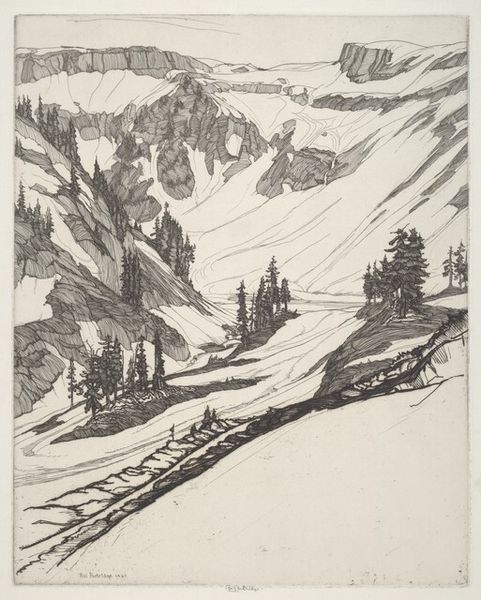
drawing, print, paper, ink, engraving
#
drawing
# print
#
landscape
#
german-expressionism
#
figuration
#
paper
#
ink
#
engraving
Dimensions: height 250 mm, width 198 mm
Copyright: Rijks Museum: Open Domain
Editor: This is Emil Orlik’s “Soldaten in Schneegebergte,” or “Soldiers in Snowy Mountains,” a 1915 engraving in ink on paper. It’s really striking how the imposing, almost theatrical mountains dwarf these tiny figures, creating a sense of isolation. What strikes you most about it? Curator: Well, immediately I think of the context of its creation – 1915, during the first year of World War I. Consider how images were used and circulated during wartime; propaganda, artistic responses, personal records...Orlik's choice to depict soldiers as insignificant against the landscape raises questions. Are we meant to sympathize with their plight, or is he commenting on the absurdity of war itself? What message would this piece have conveyed at the time it was made? Editor: That’s a perspective I hadn't considered. I guess I was just seeing the visual drama of the landscape, not necessarily a commentary on the war. Is the style typical of the time? Curator: Absolutely. This is definitely situated within the German Expressionist movement, characterized by distorted forms and heightened emotionality, to express inner feelings rather than objective reality. This aesthetic choice served a crucial function. How does the style enhance the overall impact and message? Editor: I see what you mean. The sharp, angular lines and the contrast between light and shadow amplify the harshness of the environment and suggest emotional distress. Maybe the drama IS intentional and related to the soldiers' experiences... Curator: Exactly! This reveals how art can reflect socio-political realities while exploring deeper emotional and psychological states. Thinking about its original audience also shifts our perception. The image might serve to document the weariness that the military persons went through as a means to share to others. What do you think about how the role of art during conflicts? Editor: It’s really fascinating to consider how art like this wasn't just passively reflecting the war but actively shaping how people understood it. Thanks!
Comments
No comments
Be the first to comment and join the conversation on the ultimate creative platform.
